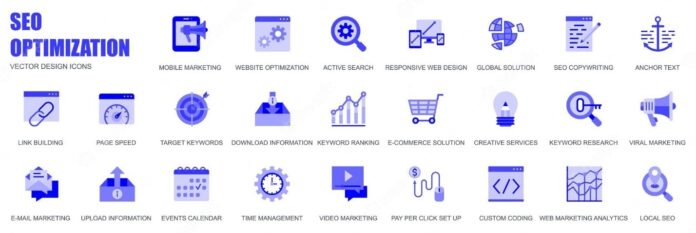Image Source: FreeImages
Understanding and implementing SEO strategies is a crucial skill in the digital marketing landscape. One such strategy that has proven to be a game-changer in the SEO universe is the effective use of anchor text. This guide delves deep into the world of anchor text optimization, discussing its importance, different types, and providing best practices for leveraging it for SEO success.
What Is Anchor Text?
Anchor text is the visible, clickable portion in a hyperlink. It’s typically displayed in a different color and underlined to distinguish it from the rest of the content. Anchor text serves as a roadmap, guiding users from one webpage to another. In the context of SEO, anchor text is vital as it aids search engines in understanding the topic of the linked page.
Why Is Anchor Text Significant for SEO?
Anchor text plays a pivotal role in enhancing your website’s SEO. It helps search engines like Google decipher the context and relevance of your linked page. For instance, if the anchor text is “best digital marketing strategies,” it signals Google that the linked page is about digital marketing strategies. In contrast, a generic anchor text like “click here” offers zero context and is less helpful. Therefore, relevant anchor text can improve your site’s rankings on Google and enhance user experience.
Diverse Types of Anchor Text
There are various types of anchor text that you can utilize on your website. These include:
Exact Match Anchor Text
This type of anchor text includes the exact keyword the page it’s linking to is targeting. For example, linking to a page about social media marketing using the anchor text “social media marketing.”
Partial Match Anchor Text
Partial match anchor text includes a variation of the keyword the linked-to page targets. It partially or fully incorporates the target keyword, along with additional words for context.
Branded Anchor Text
Branded anchor text refers to the use of a brand name as the anchor text, without any additional words. It works well if you’re citing a source or linking directly to a website.
Generic Anchor Text
Generic anchor text doesn’t include any keywords or points of reference. Users need to read the surrounding text to understand what it’s about. Examples include “click here,” “read more,” etc.
Naked Link Anchor Text
Naked link anchor text is when the link’s URL is used as the anchor text. They are usually found at the bottom of articles as reference links.
LSI (Latent Semantic Indexing) Keywords Anchor Text
LSI keyword anchor text is similar to partial-match anchor text, but it doesn’t include the actual keyword. Instead, it uses related keywords to provide context about a page you’re linking to.
Image Anchor Text
When an image is used as a link, its alt text serves as the anchor text. If the image doesn’t load, its alt text can still be clicked on.
Best Practices for Anchor Text Optimization
Having understood the importance and types of anchor text, let’s explore some best practices for optimizing your anchor text for SEO.
Ensure Relevance
Relevant anchor text plays a crucial role in enhancing your website’s SEO. It helps Google understand your site structure, which could potentially boost your website ranking. When deciding which words to use, consider what would create the most natural experience for the user.
Avoid Over-Optimization
While it’s essential to use relevant keywords in your anchor text, over-optimization can lead to penalties. Keep your anchor text as succinct as possible, preferably to five words or less. Furthermore, avoid using the same anchor text multiple times on one page as this may confuse users and Google.
Consider Surrounding Text
The text surrounding your anchor text can help users and search engines understand the context of the link better. It’s essential to pay attention to the words surrounding your anchor text. Google’s algorithm prefers natural language, so ensure your anchor text fits naturally within the sentence.
Fix Alt Text Issues
To check for missing alt text on your site, you can use tools like Semrush’s Site Audit tool. Add relevant alt text to each image to improve the user experience and SEO.
How to Add Anchor Text
In HTML code, anchor text looks like this:
<a href="http://www.example.com">Anchor Text</a>
Content management systems (CMSs) like WordPress make it easy to add, edit, and remove anchor text without requiring any coding skills.
How to Find & Fix Anchor Text Issues
While anchor text errors won’t break your site, they can create a poor user experience and make it difficult for Google to understand what you’re linking to. You can use tools like Semrush’s Site Audit tool to find and fix these errors.
The Impact of Google’s Algorithm on Anchor Text
Google’s algorithm has a significant impact on how we optimize anchor text. Google’s Penguin update, also known as the “webspam algorithm,” has undergone several changes over the years making the optimization of anchor text more important than ever.
Conclusion
Anchor text optimization is a significant aspect of any successful SEO strategy. When used correctly, it can improve your website’s visibility and rankings. However, it’s crucial to avoid over-optimizing your anchor text, as it can lead to penalties from Google. Therefore, adhere to best practices and ensure your anchor text is natural, informative, and relevant to the linked page. By doing so, you’re well on your way to achieving SEO success.

